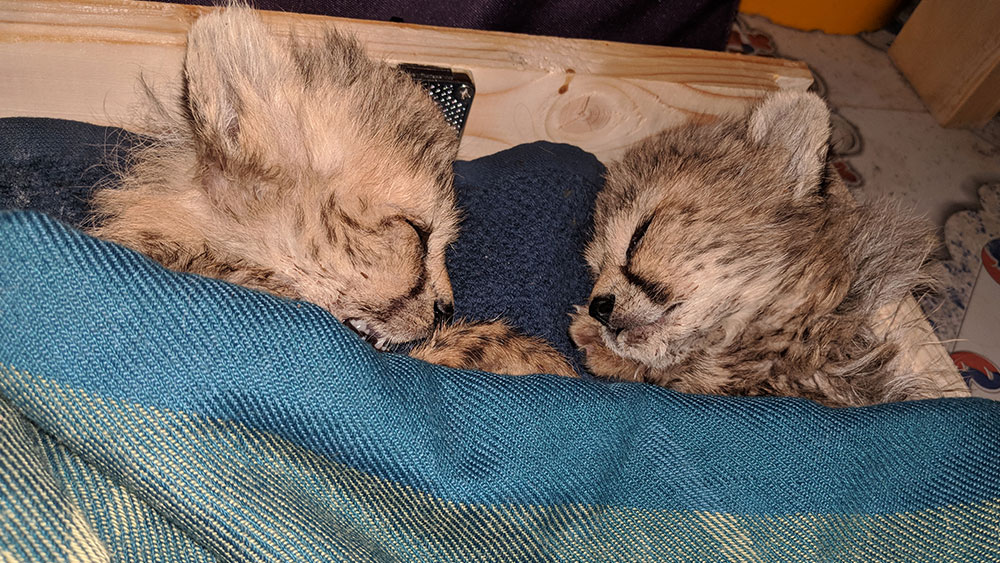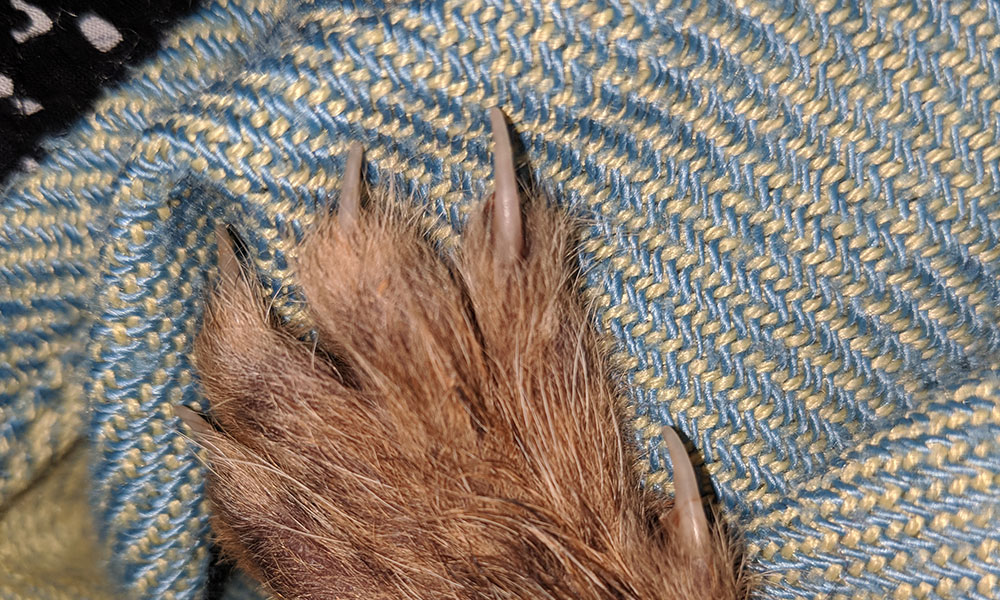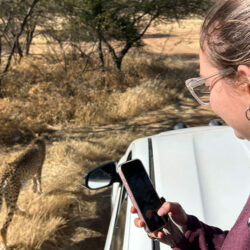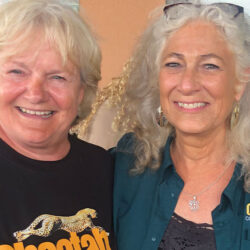Cubs Caught Up in the Illegal Pet Trade
-

- by Jess Martin June 20, 2019

As the first volunteer at CCF Somaliland in September 2018, I had the pleasure of working with the first 12 cheetahs that the facility held at the time. These included Veepi, Indi, Harry, Shakir, the six weather cubs (Misty, Sunshine, Rainbow, Moonlight, Little Star, Cloud), light as a Feather, and of course, Kidi. My presence was needed to assist in the care of Kidi and her sister and brother, all of whom had been in the care of the CCF team for only three days at the time of my arrival. I had been sent pictures of them, and partly knew what to expect. They were around four to five weeks old, they would need bottle feeding, they were malnourished, and very vulnerable. I knew what I was in for and was also very excited to be going to help.
I arrived midday, and Guenther picked me up from the airport. I remember it being so sunny and warm, and I was so excited to get started! I had brought a new baby scale, flea medicine, leashes and collars, and some approved cheetah cub toys. Once we arrived, I walked immediately into Guenther’s office. The cubs were being kept here for monitoring. I put my suitcase outside the office door and went inside to get a look at my project for the next two weeks.


When I first laid eyes on them, all I can remember thinking is “Oh my goodness, they’re so much tinier than I thought!” They were not only small, but malnourished, and very wobbly on their tiny long legs. All in all, though, they seemed in incredible spirits. They played with each other, drank heartily at mealtimes, and explored their surroundings intensely. I spent most of my time caring for these small babies, feeding and cleaning up after them (as they were eating every three hours or so).
Cheetah cubs are very difficult to raise, even in the best of situations. After a day, the three cubs started to become uninterested in drinking. The male took less and less milk, and although they still seemed in good spirits, I was worried for their lethargy. Staying in constant communication remotely with Dr. Laurie Marker, CCF’s veterinarians and keepers, they led me in the efforts to help the cubs. First, the smallest girl faded and died, in a matter of only hours. I put the phone on speaker with CCF’s staff on the other end and began chest compressions and breaths, I tried to revive her, but she was gone.
The second cub, Kidi (named for a very strong species of tree found in Somalia), had gone into what seemed to be a coma. She was non-responsive, and her tongue was swollen. The third cub, the male, was weak but still drinking and responsive. He seemed to be doing ok, but he had died before the sun rose the next day.
Since the third cub, Kidi, was still in a coma-like state, Dr. Laurie and her consulting veterinarians asked if Neju and I could try to tube feed her, and they walked us through the procedure via detailed what’s up messages. Dr. Laurie stayed with me throughout the day. We were able to successfully get food into her via a stomach tube, and a few hours later, thankfully, her tongue stopped swelling and returned to normal. Her eyes became responsive. She started moving. We had brought her back. It was the most incredible thing I had ever seen, and I’ve worked with cheetahs for twelve years. We were still very concerned about the health of this cub and about any potential diseases she carried, which is why we were in quarantine, to protect the other cheetahs. I stayed in an isolated room with her consistently for days until her health improved.
As the days went on, Kidi started to get even stronger. She became a hearty eater and even began to play. She chased paper balls across the floor and get worked up into what we called the “zoomies” where she would run under the bed and out the other side in circles over-and-over again until she wore herself out.
We couldn’t leave her alone, so when I slept I hung my hand off the side of the bed, so she could touch me, and frequently through the night she did. Kidi was very independent, always doing her own thing and exploring the quarantine room. She was very vocal at feeding time and came directly for her bottle and supplements.
She grew stronger by the day, and she loved to play constantly. One of her favorite activities was to be brushed on her face with a clean toothbrush. She would push her face into it and sit for ages just letting me brush her fur. This was good practice for putting flea medication on later. We began offering her small pieces of meat very slowly to try, and not long after I left she was eating meat and was also introduced to Light as a Feather (a cub a few weeks older than her). They instantly bonded, and although Kidi was about half or less Feather’s size, she ruled the roost! Feisty as she could be, independent, and the most persistent animal I’ve ever met, Kidi stole my heart.

During my stay, I also had the pleasure of helping to vaccinate all the cheetahs and provide them with flea medication. I helped reinforce with Neju previous teachings by CCF personnel, like how to properly play with them (and leash walk a few social ones for exercise), brush them, and feed them safely. We built more enclosures for cheetah yet to come and extended the area for the cheetah already housed to have more room. We disinfected the cub area and built a new “howdy” house next to Feather for when Kidi could be introduced to her later (so they could see but not touch at first).
We organized all the records, created a whiteboard with protocols and schedules, and had the best time doing it! I cannot wait to go back and see what all the volunteers after me have accomplished and how much the cheetahs have grown!
Related Reading
-
October 20, 2025
How Do You Outrun Extinction? -
October 17, 2025
Two CCF Trips – Eastern and Southern Africa




